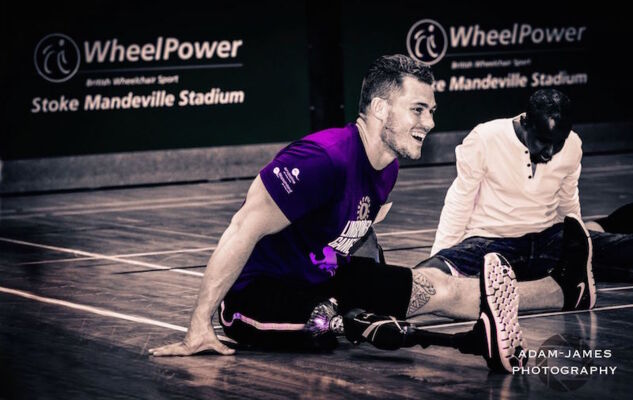Case Studies

Jack's Story
Jack Eyers is a 23 year old personal trainer and he became an amputee in November 2005.
How did you lose your leg?
I was born with Proximal Femoral Focal Deficiency (PFFD) in my right leg. I had elective surgery when I was 16 to have my right leg amputated above the knee.
How did you become an actor/extra?
I was 7 and going through a tough time at school, I was at the limb centre when my prosthetist introduced me to an inspiring guy who had been filming Saving Private Ryan. He showed me pictures of him being blown up on the beach and called himself a one-legged stunt man! He said I should join a disabled acting agency. My first job was a short disability awareness film called Talk.
What was the most exciting role you have been in?
Barclays advert because of the publicity and coverage.
Have you ever needed a specifically designed leg for a role?
I’ve had to wear several partially attached or severed limbs. In a stunt film a martial artist had to kick my knee in so it bent backwards and looked broken. I had to design that knee... I just loosened the pins in my water leg and turned the knee joint backwards so when he kicked it, it collapsed and looked dislocated.
What was it like being a part of the opening ceremony of the Paralympics?
Amazing! I auditioned to be a part of the London 2012 Paralympic opening ceremony with not much confidence I would get through. I was chosen to perform with a fantastic group of other disabled people. I spent 4 months training with a renowned circus school in London and learnt to be an aerial artist. In front of 80,000 people at the Paralympic opening ceremony, I performed an aerial rope routine 10 metres in the air, and a harness routine flying over 35 metres. I learnt so much about my body’s abilities, and the confidence I have gained will follow me throughout life. Being part of such a momentous event was truly unforgettable.
How intensive was the training?
Very intensive! I spent 4 months in London, the first 2 months was at a Circus school and we trained every other day for 5 hours a day. Strength and conditioning, movement class, rope and trapeze... We then spent 6 weeks in a studio practising and putting routines together. We were training 5-6 days a week for 5-8 hours a day. The last 2 weeks was in the stadium. We were there 7 days a week. Most of the rehearsals were in the evenings so we could practise with the lights and music.
What will be your lasting memory?
Waiting to perform the rope act... standing back stage in my skin tight green shiny leotard,the Great British flag had just entered the stadium and I could hear the crowd roaring! Adrenaline was coursing through my veins. We were all so excited and yet nervous knowing that the royal family will be watching. Ear-piece in and sticky rosin on my hands, ready to climb the rope! My friend I had been training with turned to me and said “this is it... this is what we have been training so hard for!” It was a real sense of achievement for me.
How did you get into modelling?
I came across an article on a disabled modelling agency (Models of Diversity) when browsing through a magazine at the limb centre. I got in touch and they invited me to a trial photo shoot. They gave me a crash course on how to model, how to hold my posture and how to hold my facial expressions. They were fantastic and gave me lots of confidence to start fitness modelling.
What motivates you?
My motivation is... how far can I go? How strong? How big? How lean can I get?
The body is an amazing thing and will adapt to anything you put it through. I enjoy pushing the limits of what I can achieve. My body is my business, so I believe I should preach what I teach.
What are the components of your artificial limb and how have they helped you achieve your goals?
I’ve been through 4 or 5 different knees but somehow managed to buckle or break the majority of them, I now wear suction sock and pin and a Blatchford Endolite KX06 knee.
What advice would you give to other amputees?
I believe when you lose a limb you are reborn. Like a child you have to learn to walk and/or catch again (depending on the amputation). It is expectable to fall over, drop things and be clumsy. This teaches a baby’s brain motor skills, balance and hand eye coordination. As a new amputee it is important to go through this process and get outside your comfort zone by trying new activities and sports. Chase your dreams! Change is scary and often uncomfortable, but life begins outside your comfort zone. So learn to embrace it. Believe in yourself!
Any favourite quotes you would like to leave us with?
“Live the dream, No one has ever drowned in their own sweat.”


